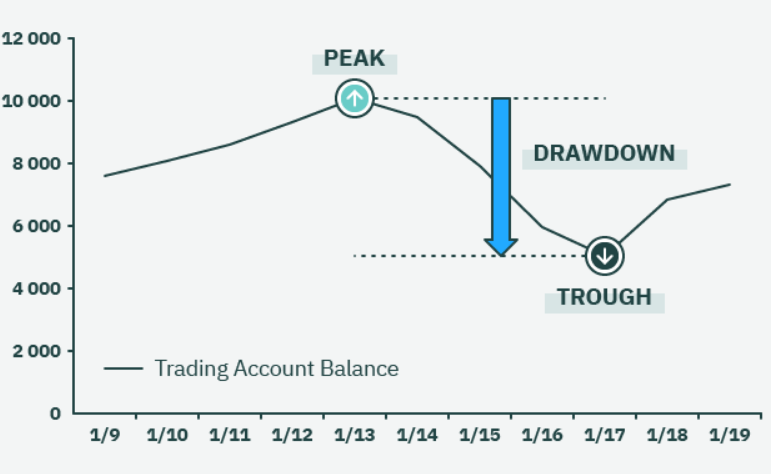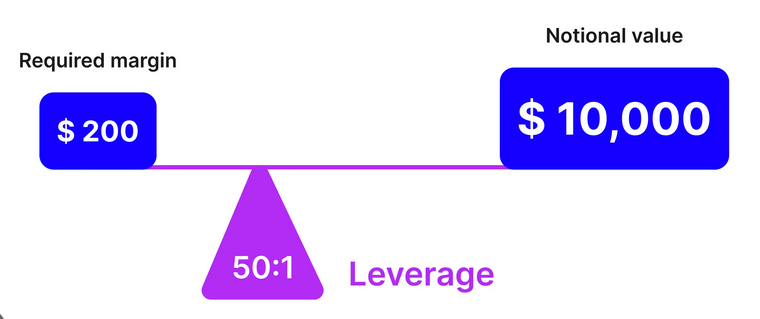In Forex trading, drawdown is an important measurement to understand and follow for all levels of trader. Drawdown refers to the decline in a trading account from its peak to its trough over a specific time period and is considered a critical metric for evaluating both the risk and performance of a trading strategy.
Recognizing the significance of drawdown is essential because it directly impacts investment decisions and risk management strategies. A trader’s ability to manage drawdowns effectively can be the difference between sustained success and potential financial setbacks in the volatile Forex market.
By reading this short article by Axcess Fx you will gain a basic understanding of drawdown and how it will affect the performance of your Forex Robot.

The Mechanics of Drawdown
To understand the mechanics of drawdown in Forex, it is important to understand how it is calculated and the difference between a drawdown versus a loss.
Firstly, the calculation; drawdown is measured as the percentage decline from the highest point (peak) of capital in your trading account to the lowest point (trough) before a new peak forms. For example, If your Forex trading account increases from $10,000 to $15,000, but then drops to $12,000, the drawdown is 20%; this is the difference between the $15,000 peak and the $12,000 trough.
It is important to differentiate between a drawdown and a loss. In simple terms, drawdown is a measurement of the decline from the peak of your trading capital, where a loss is just considered relative to the entry price of a Forex trade.
Understanding these aspects is vital for effectively managing trading risks. For more detailed insights on drawdown beyond the scope of this article, a good resource is Investopedia’s comprehensive guide on drawdowns.
Drawdowns in Forex Trading
In Forex trading, drawdowns are mainly influenced by two key factors.
Forex market volatility
Drawdown in Forex trading is typically more pronounced because of the inherent volatility in Forex market especially during economic turmoil or geopolitical events.
The impact of leverage
Leverage on Forex trades using margin amplifies not just gains but also drawdowns, making it a double-edged sword

The Relationship Between Risk Management and Drawdown
Effective risk management strategies are key to minimizing drawdowns. It is important, as soon as a Forex position has been opened to place stop-loss orders to limit potential losses and take profit orders to capitalize on favorable trades. Deciding where to place these orders is equally crucial as it underpins maintaining favorable risk-reward ratios to ensure long-term profitability.
Diversifying trading strategies and currency pairs is also a way to mitigate risk which can be done by spreading trades across various currency pairs to reduce risk exposure and also considering different trading styles and time frames.
Employing automated trading systems to maintain discipline is the another way to manage risk and reduce the effects of drawdown. We will now cover drawdown and Forex robots.
Forex Robots
Forex robots or Expert Advisors (EAs), are complex automated trading systems used in the Forex markets. They have three advantages over manual human-only trading:
- Automating Trading Decisions: Forex robots are configured to analyze the FX Market through complex algorithms, and then place and execute trades based on this analysis including entry / exit points and position sizing.
- Efficiency of time: FX robots can work continuously around the clock without the need for human intervention. It permits a constant market monitoring capability and instant reaction to market changes, even when the trader is not actively at a trading desk.
- Emotionless Trading: Forex robots eliminate human emotional bias by strictly adhering to their programmed strategy; it means all decisions are made only on predefined criteria and logical analysis.

Forex Robots and Drawdown Management
It is through a combination of risk management protocols and profitable algorithmic strategies that Forex robots can effectively manage drawdown.
Many Forex robots can dynamically adjust trade sizes and modify stop-loss orders to mitigate risk and minimize large losses according to predefined criteria. For example, A robot could be automated to switch between pre-programmed strategies like more conservative or more aggressive trading styles depending on a trader’s risk tolerance in set market conditions. Thereby reducing exposure during periods of high-volatility, and increasing exposure during low volatility market conditions.
Backtesting a robot against historical data is important for managing drawdowns. Backtesting evaluates a Forex robot’s performance in different market scenarios, helping predict how it might perform in varying conditions. Backtesting also allows Forex traders to both identify and rectify potential weaknesses in a robot’s preprogrammed strategy, enhancing its overall effectiveness.

Evaluating Forex Robot Performance Using Drawdown Metrics
When assessing the performance of Forex robots, several key metrics around drawdown are invaluable.
Profitability Rate: A metric that indicates the percentage of winning trades against losing one, offering an insight into the bot’s overall effectiveness.
MDD (Maximum Drawdown): MDD represents the largest peak-to-trough drop in the value of your trading capital. It reflects the highest level of loss experienced by the robot’s pre-programmed strategy, providing a feel of the potential risk involved.
Recovery Factor: The recovery factor evaluates a robot’s ability to recover from a drawdown, highlighting the speed at which it may return to optimum performance after a loss.
The ability to understand and compare drawdown metrics is vital when selecting the right Forex robot. The implications of MDD are especially important as it highlights the potential risk of a trading strategy. A bot with a high maximum drawdown typically indicates a higher risk strategy, that may be unsuitable for FX traders with a lower risk tolerance.
Further Resources
Written by Chris Gillie

Chris Gillie is the founder of Axcess FX, a Forex software review and research website. He is a former investment banker who worked in FX Sales on the UBS London trading floor. Chris has been using Forex trading software as part of his trading set-up since the late 2000s and the embryonic days of MetaTrader and the MQL coding language.
